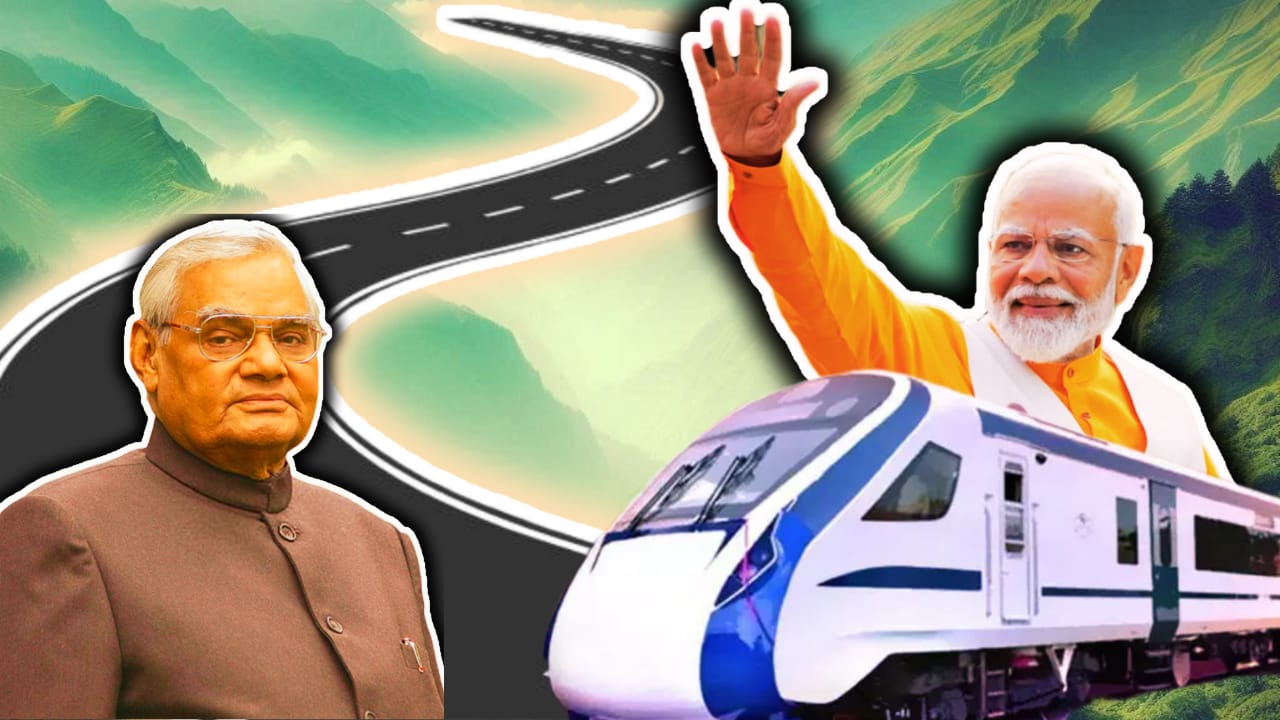Though there were multiple achievements we cherish about the Vajpayee Govt, The Golden Quadrilateral’ was the one of the most worthwhile to mention. The highway connectivity interlinking the four metro cities – Delhi, Mumbai, Chennai & Kolkata – located in four directions of the country was a unique and ambitious project towards infrastructure development of our country.
It was the immediate priority of the Vajpayee Govt when it was voted to power with a more comfortable majority in its third term in 1999. To conceive such an idea and set up an implementation timetable, at that time was regarded as more futuristic and visionary.
During the inauguration of the project, I still vividly remember the speech of Atal ji, when he unveiled the project and briefed its multipronged expected results which will benefit the country in future. It was aimed with an idea to kick start a set of economic activities – reduction of travel time, creation of a conducive environment for industrial set up, job creation, improved freight movements, better fuel usage, improve the life & quality of vehicles, reduction in road accidents, pollution control etc., In other words, it was a single project aiming at multiple targets. And it was brought at a time when the Vajpayee Govt was unjustifiably criticized for lacking an economic vision. It was also propagated that BJP was more effective only as a party of opposition and not for governance. That jinx was shattered with this historic project by establishing that BJP also can prove itself as a natural party of governance.
Drawing parrels with the Golden Quadrilateral is Modi’s ambitious ‘Vande Bharat’ project. Railways are equally a significant part of the economics as much as roads & highways. It plays a vital role not only in infrastructure but also in National Integration by bridging both distance and human minds.
Unfortunately, there was growing fatigue among commuters towards the usage of railways particularly when the road connectivity was seen better, quick, cheaper, and easier. From information available from many data, there was stagnation in the users of railways. Also, when the flight movements improved due to the setting up of new airports and the introduction of flight services to tier two cities, train usage was seen losing its stream and charm. Modi ji wanted to Kayakalp the railway sector by reversing both the mindset and the status and one such innovative step towards it was the introduction of Vande Bharat trains including recently added sleeper coaches along with Amrit Bharat expresses.
To rejuvenate the Railways and to address its multiple challenges, the Modi Govt, in its second term starting in 2019, wanted to adopt a holistic approach through the introduction of the Vande Bharat express model. To regain public usage, Railways need to gain their confidence and preference over other modes of transport. In Europe and Japan, the availability of multiple railway menu offer choice to the commuters. Hence, to increase public use, the first job is to address the passenger expectations and thereby improve the facilities. Starting from the design, look, speed, comfort, and connectivity, the Govt wanted to highlight the Vande Bharat as a model through which the public get an exciting experience along with satisfaction that an actual transformation is taking place on the ground.
The other is the long-pending demand of the revival of the railway industry by infusing a new life into it – by reviewing the use of modern technology, transforming, and expanding the existing railway stations to meet the growing population needs. The holistic approach includes the introduction of light weight coaches, reviewing signaling system, laying new tracks, targeting 100% electrification and job creation.
Railways is one such industry whose potential was untapped for a long time. It is one such large sector which gives opportunities for growth of multiple ancillary industries and increase job creation. It encourages engineering, R&D, innovation, technology, supply chain management and human resources. It also attracts the young talents by utilizing them in Nation building. Starting from coach design, exploring new railway routes, improvement of signaling, layout planning of railway stations.
The wholesome approach also involves cost control mechanism. Increase in Capital investment decreases the revenue expenditure. Investment in signaling systems reduces train accidents thereby saving not only human lives but also the life of coaches. Adopting modern technologies including exploring short distances to destination reduces maintenance costs.
The whole approach also has Modi touch with a concern and commitment towards the environment through reduction of carbon emissions starting from usage of solar panels in the stations and reducing the dependence on diesel usage for the railways. The stations are also transformed with modern facilities and cultural touch by giving more job opportunities to the local artisans as well, to display the link between the station with that of the local culture. Still a lot needs to be done, but the ongoing process unveils the fact that the railways are heading in the right direction both in terms of transformation and utilization.
Faith in public infrastructure system indirectly converts into trust in the Government when public get convinced that the tax payer money is properly utilized towards public transport and facilities.
General belief that a good politics does not auger well with good economics. But, if the right objective along with right strategies, then good politics can complement good economics and vice versa. Both Vajpayee & Modi Govts proved themselves, by this example.
(The views expressed are the author's own and do not necessarily reflect the position of the organisation)


